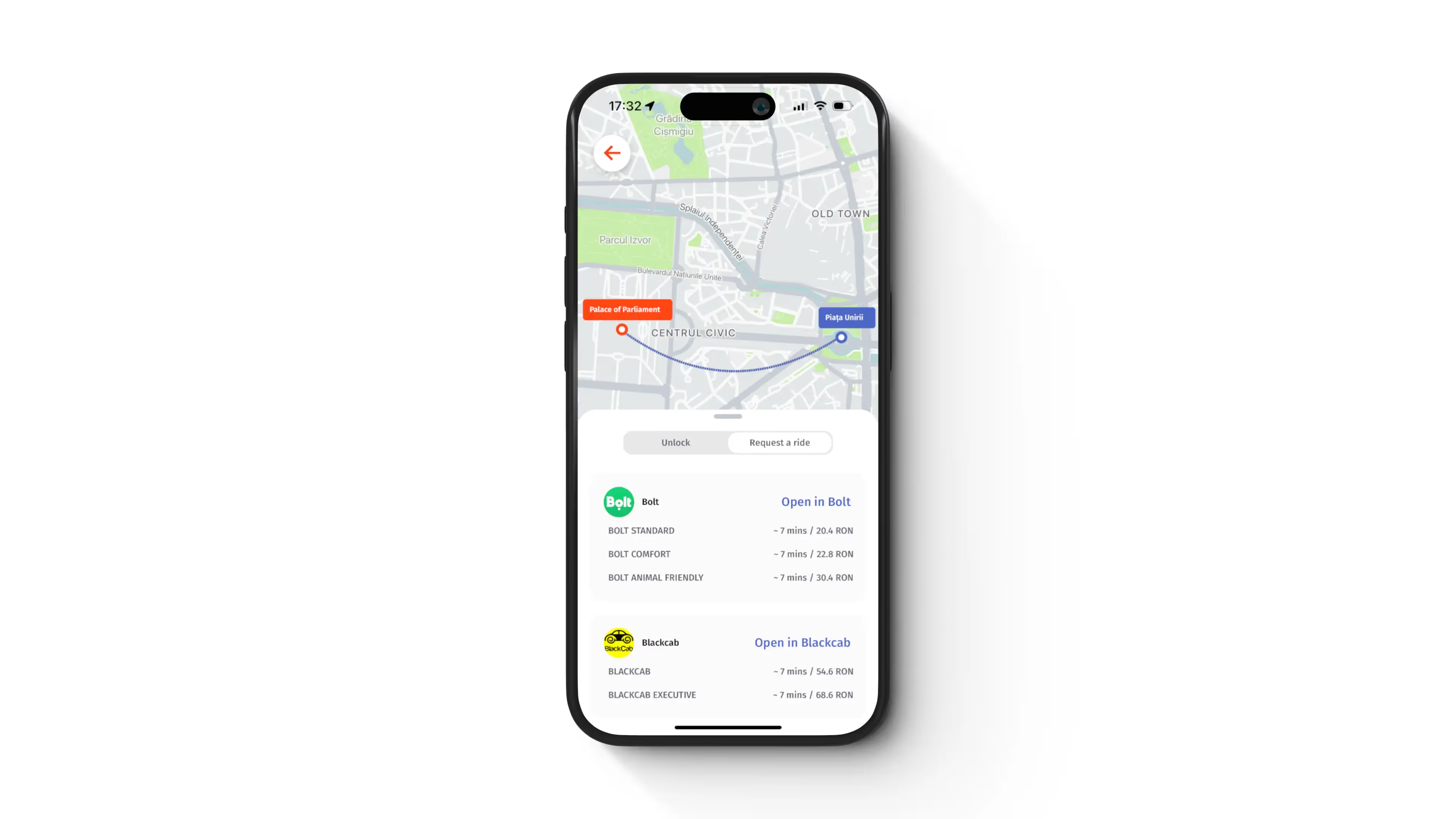UrbanAir aims to transform urban mobility by addressing the frustration of juggling multiple apps to find the nearest electric scooter, bike, or car. “Urban” because it focuses on city transport, “Air” because it’s fast, seamless and easy to use.
By centralizing all urban transportation options into one seamless platform, UrbanAir envisions a future where city travel is swift, efficient, and hassle-free. The app aspires to not only save users time but also provide a foundation for emerging mobility services to thrive, ultimately enhancing the convenience and accessibility of urban transportation for everyone.
With all the urban mobility apps that we use, it’s a hassle to find the right transportation method in the right app. The idea has been to gather all urban mobility apps like Lime, Blinkee, or GetPony into a single place, at a glance.
While the concept itself is very simple, it quickly became very clear that such an app would greatly cut the time needed for people to find a quick ride around town plus it would also be a platform on which new services could live and grow more popular.
installs
launched
available around the world
Mihai Rotaru
Founder, UrbanAir

While designing UrbanAir and bringing all mobility apps under a single roof, we’ve come acrossa few challenges:
Product Challenges:
Tech Challenges:
UrbanAir has been designed as a mobile app and has been implemented using React Native technology, the best solution for hybrid mobile development.
We chose a cost-effective implementation using React Native because we’ve been able to write almost the same code for iOS and Android. As a result, we have to maintain less code which is great for easier and faster maintenance as well as flexible development as we can always implement additional components natively for iOS or Android. Parse Server is a BaaS solution perfect for mobile apps, accelerating development time and offering almost instant scalability. Parse Server on top of Heroku allows you to scale up/scale down the infrastructure when needed.
We helped UrbanAir with an easy-to-use interface, making sure the app is easy to use and fast.

UrbanAir is a startup, and one of the strengths of a startup is speed. From the get-go, the focus has been on speed – both as a service and also from a UX perspective. The development speed met the expectations, we launched the first version of the app in 3 months. We integrated as many e-scooter services as possible right on launch.


UrbanAir enables people to filter the map and find the closest and fastest mobility service (e-scooter, cars, bikes).

We helped UrbanAir with an easy-to-use interface, making sure the app is easy to use and fast.
UrbanAir is a startup, and one of the strengths of a startup is speed. From the get-go, the focus has been on speed – both as a service and also from a UX perspective. The development speed met the expectations, we launched the first version of the app in 3 months. We integrated as many e-scooter services as possible right on launch.
UrbanAir enables people to filter the map and find the closest and fastest mobility service (e-scooter, cars, bikes).
After we delivered the initial version, we helped UrbanAir to transition the product development to their internal team.





For each flow in Medicai, we develop user flow diagrams just like this one to help us understand what the optimal user journey looks like.




The Medicai Design System provides a unified component base for both designers and developers to ensure consistency throughout all products.


Medicai's DICOM viewer supports all imaging types, provides efficient storage, and allows seamless access to medical images from any device, including mobile ones through the Medicai Mobile app, enhancing real-time collaboration and patient care.
Below you can play with Medicai’s DICOM Viewer directly embeded in our website. Inside the viewer, you can see a MRI imaging study.


Software Development: Build and maintain the app using React Native for cross-platform compatibility and robust API management.
Quality Assurance (QA): Use automated and manual testing to ensure reliability and efficiency across devices.

DevOps Strategy: Develop a CI/CD framework for rapid, reliable app updates.
Scalability: Use scalable cloud infrastructure (e.g., AWS, Heroku) with auto-scaling for peak usage.
Monitoring and Maintenance: Implement tools for performance monitoring, anomaly detection, and regular updates.